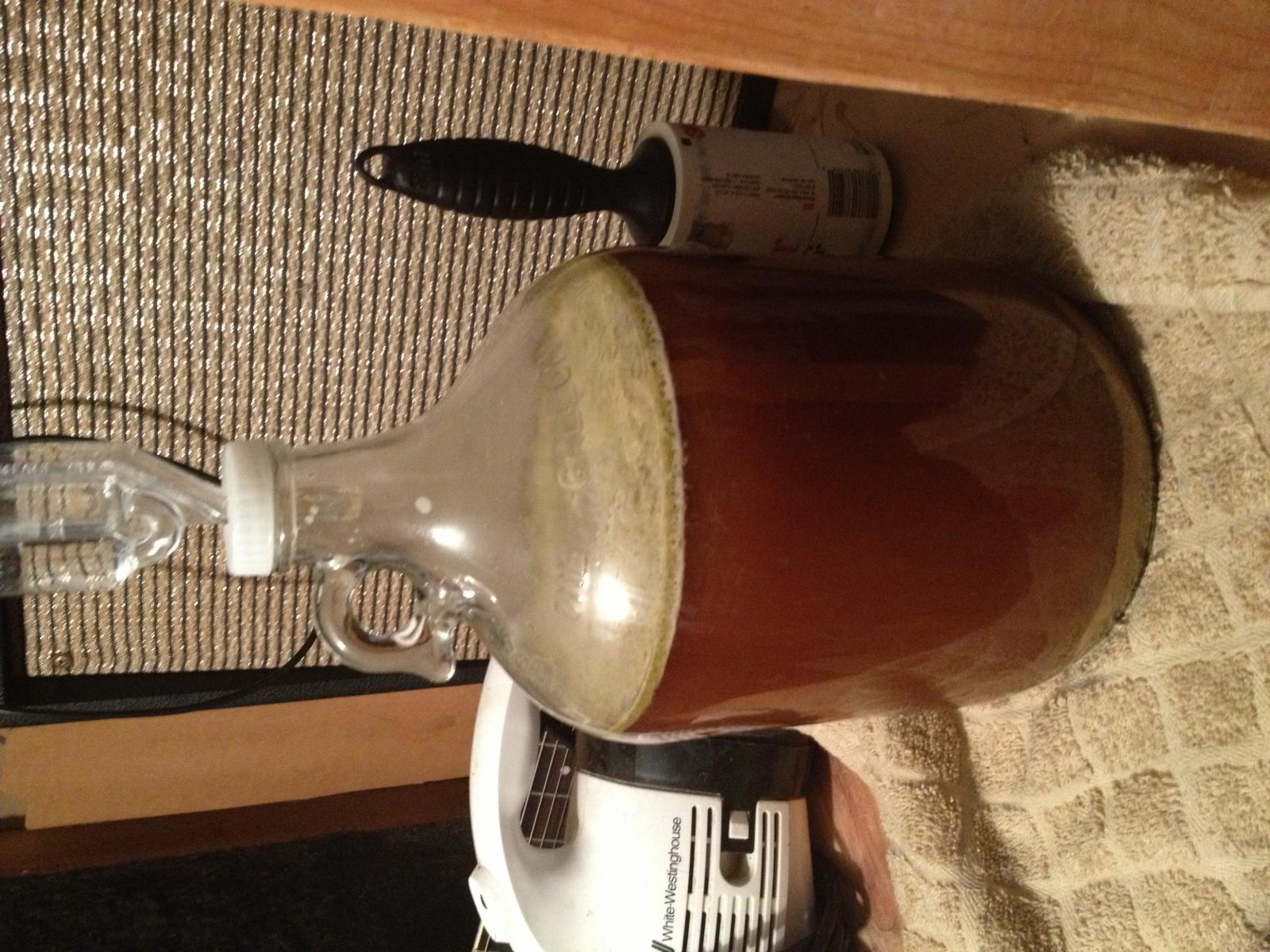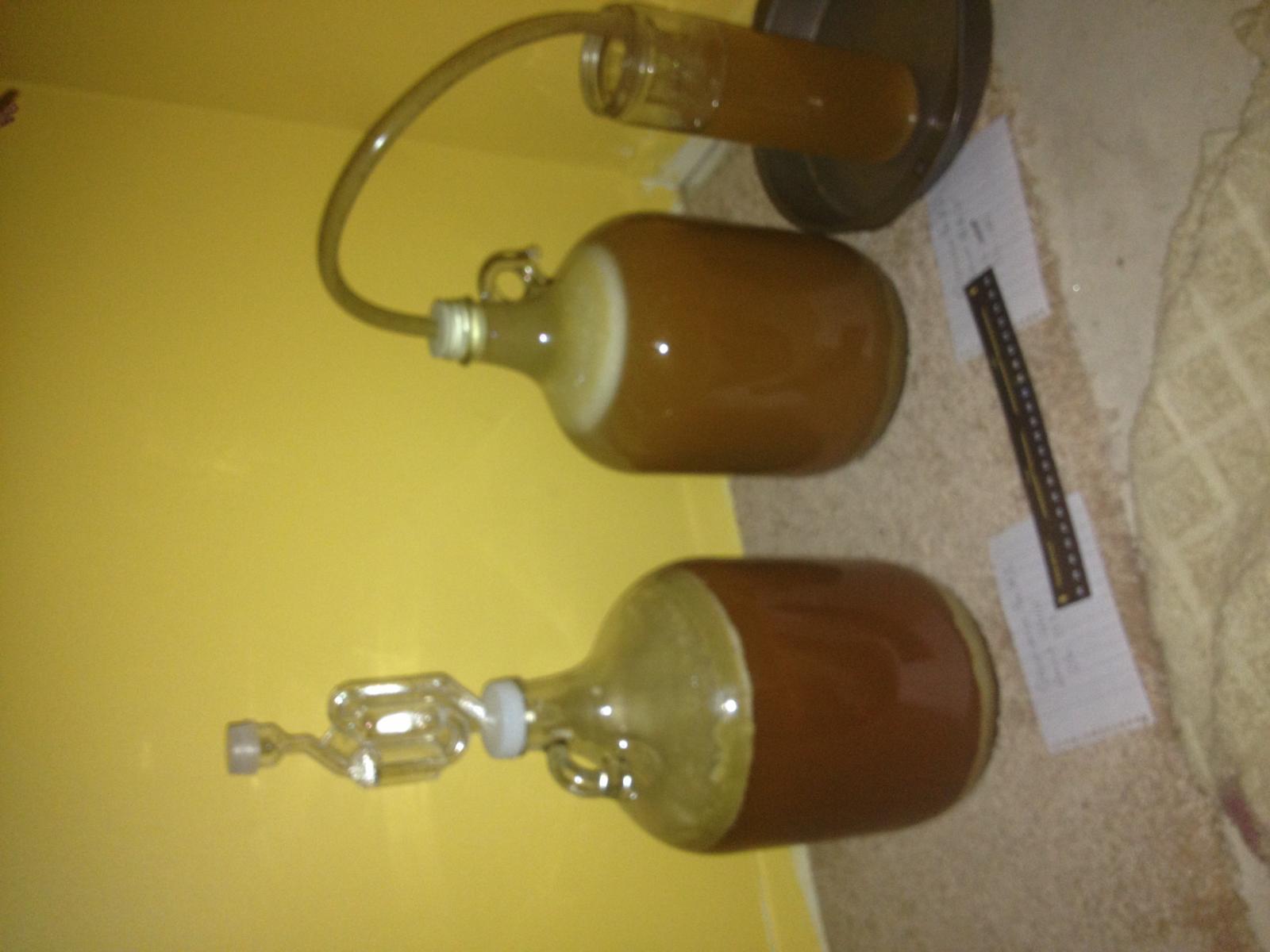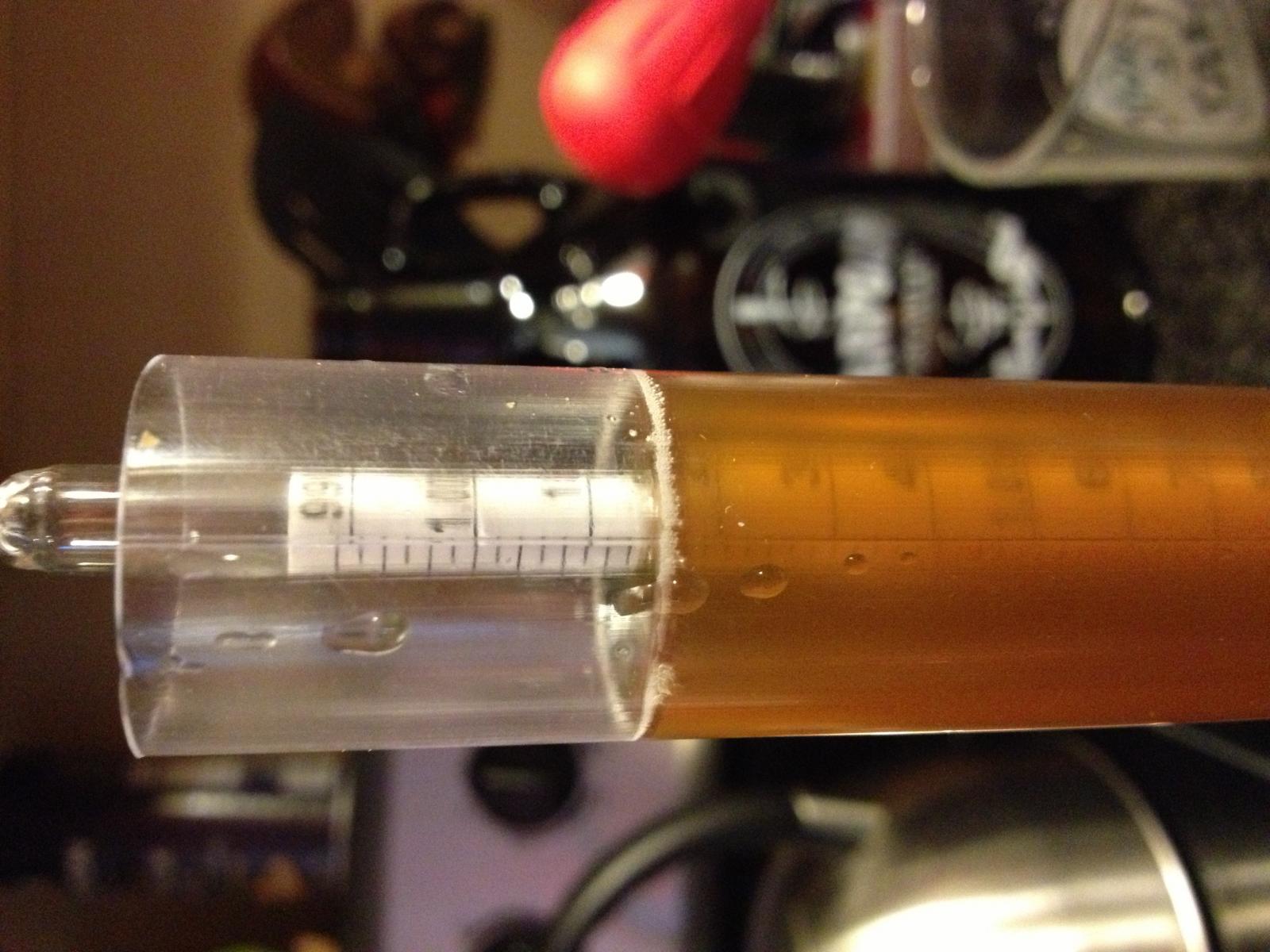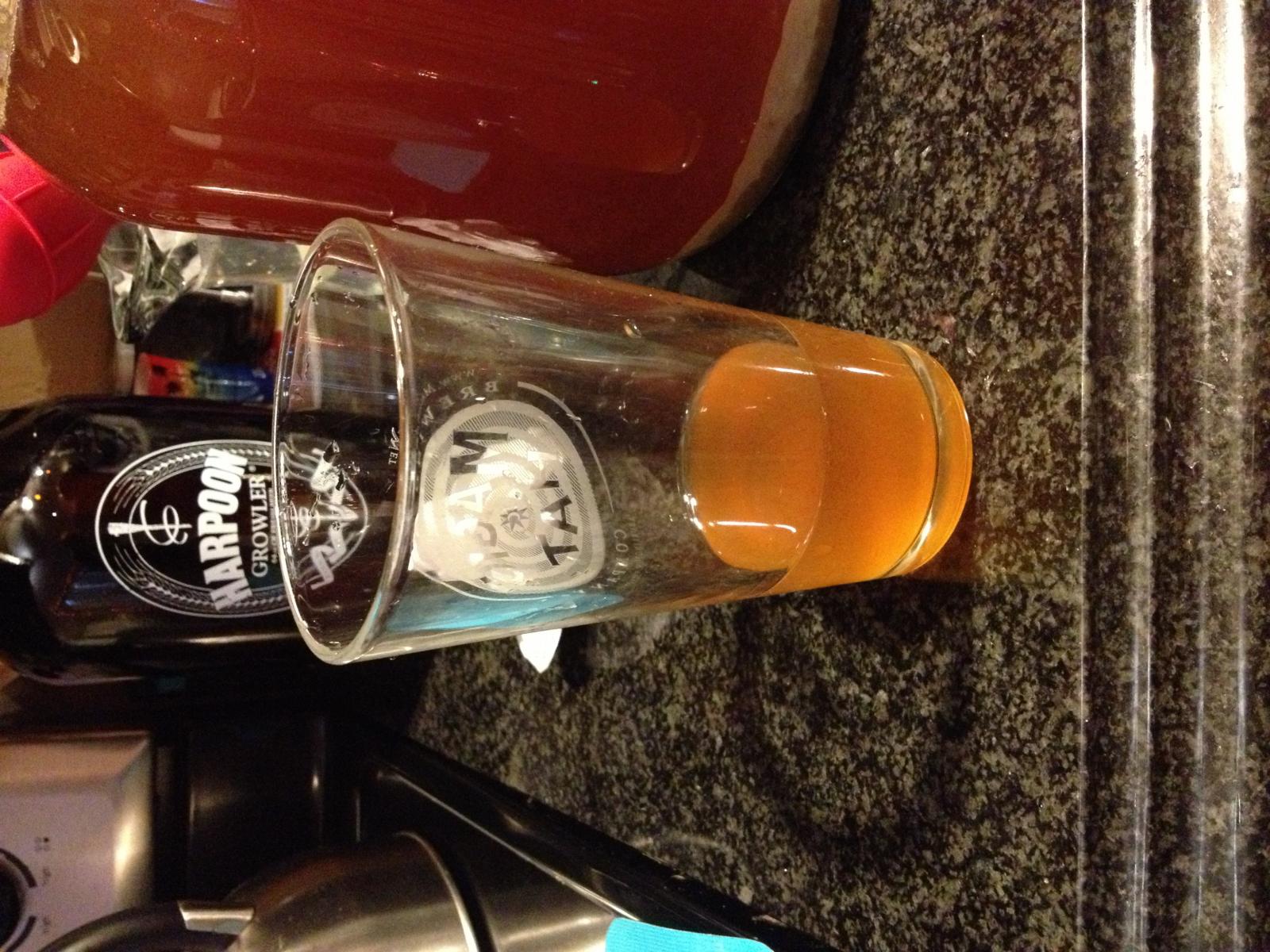elninbo
Member
- Joined
- Mar 12, 2015
- Messages
- 24
- Reaction score
- 0
Yesterday was brew day, here are my recipe and notes:
Steeping grains: 8oz caramel 40
Fermentables: 1 lb. breiss golden light DME
Hop schedule: .2 oz cascade (6.9%AA) @ 60
.1 oz cascade @ 30
.2 oz cascade @ knockout
Yeast: ~6g Safale US-05 dry ale yeast
This is a modified recipe that came with a kit from my local brewstore. So I started with ~1.5 gal of tapwater in a 3 gal stainless steel brewpot. Steeped @160 F for 30 min, got an extremely dark color. So much for pale ale lol. Drip drained the grain bag, brought to boil. Removed from heat, added DME. Brought to boil, followed hop schedule. Cooled wort in ice bath in the sink (got to ~70 in 15 min. with lots of ice and the water running on a slow draining sink).
Siphoned the wort into the fermenter (1 gal glass jug) and shook vigorously. There was a lot of trub in the fermenter.
Here's where I might have messed up: I didn't have any preboiled water on hand to rehydrate the yeast, and I was worried my tapwater would stall/kill it. So I skipped that and pitched directly into the fermenter. Capped with a bung & airlock.
It is currently stored at 66F. It's been about 12 hours. Theres a small layer of foam on top, I THINK this is the kreusen (sp?). No visible bubbling yet. I'm hopeful, but worried! I'll keep y'all updated.
Steeping grains: 8oz caramel 40
Fermentables: 1 lb. breiss golden light DME
Hop schedule: .2 oz cascade (6.9%AA) @ 60
.1 oz cascade @ 30
.2 oz cascade @ knockout
Yeast: ~6g Safale US-05 dry ale yeast
This is a modified recipe that came with a kit from my local brewstore. So I started with ~1.5 gal of tapwater in a 3 gal stainless steel brewpot. Steeped @160 F for 30 min, got an extremely dark color. So much for pale ale lol. Drip drained the grain bag, brought to boil. Removed from heat, added DME. Brought to boil, followed hop schedule. Cooled wort in ice bath in the sink (got to ~70 in 15 min. with lots of ice and the water running on a slow draining sink).
Siphoned the wort into the fermenter (1 gal glass jug) and shook vigorously. There was a lot of trub in the fermenter.
Here's where I might have messed up: I didn't have any preboiled water on hand to rehydrate the yeast, and I was worried my tapwater would stall/kill it. So I skipped that and pitched directly into the fermenter. Capped with a bung & airlock.
It is currently stored at 66F. It's been about 12 hours. Theres a small layer of foam on top, I THINK this is the kreusen (sp?). No visible bubbling yet. I'm hopeful, but worried! I'll keep y'all updated.












![Craft A Brew - Safale BE-256 Yeast - Fermentis - Belgian Ale Dry Yeast - For Belgian & Strong Ales - Ingredients for Home Brewing - Beer Making Supplies - [3 Pack]](https://m.media-amazon.com/images/I/51bcKEwQmWL._SL500_.jpg)
















































